Woodpeckers, those charismatic birds with a knack for hammering on trees, are full of surprises. Let’s delve into the fascinating world of woodpeckers and uncover some intriguing facts about their lives.
Built for Impact: The Woodpecker’s Head
Ever wondered how woodpeckers manage to hammer away at trees all day without turning their brains into scrambled eggs? It’s probably due to their incredible adaptations:
- Super Strong Skulls: Their skulls are built like high-tech helmets! They’re thicker and denser than those of other birds, providing exceptional protection against the constant pounding.
- Shock-Absorbing System: Imagine a tiny shock absorber wrapped around the woodpecker’s brain – that’s the hyoid bone! It acts like a seatbelt for their brain, minimizing the jarring impact of each peck.
- Tongue Twister: Their tongues are incredibly long and barbed, perfect for extracting insects from deep within tree cavities. But here’s the kicker: when not in use, the tongue actually wraps around the back of the skull, providing an extra layer of cushioning for the brain. Talk about clever design!
More Than Just Drummers: The Social Side of Woodpeckers
While we often think of woodpeckers as solitary creatures, some species have surprisingly complex social lives:
- Acorn Woodpeckers: Masters of Cooperation: These birds take teamwork to a whole new level! They live in family groups and work together to create elaborate “granaries” in trees, where they store acorns for the winter. Talk about planning ahead!
- Communal Breeding: In some woodpecker species, multiple females might lay their eggs in a single nest and share the responsibilities of incubation and chick-rearing. It’s a fascinating example of cooperative breeding in the bird world.
The Unsung Heroes of Forest Health
Woodpeckers are often called “ecosystem engineers,” and for a good reason. Their activities provide essential benefits to the forest:
- Natural Pest Control: Think of woodpeckers as the guardians of the forest, keeping pesky insect populations in check. Their voracious appetites help protect trees from harmful infestations.
- Home Builders for Others: Those abandoned woodpecker cavities? They become prime real estate for a whole host of other bird species, owls, squirrels, and even bats! Woodpeckers are essentially creating affordable housing for the entire forest community.
- Seed Dispersers: As woodpeckers forage for food, they often carry seeds to different parts of the forest, either intentionally or accidentally. This plays a vital role in the regeneration and diversity of trees.
Challenges in a Changing World
Unfortunately, woodpeckers face several challenges in today’s world:
- Habitat Loss: Deforestation and urbanization are shrinking the forests that woodpeckers call home. They need large, mature trees for both nesting and foraging, and the loss of these habitats poses a significant threat.
- Climate Change: As our climate changes, it can disrupt the delicate balance of ecosystems. Shifts in temperature and rainfall might affect insect populations, which, in turn, can impact the food supply of woodpeckers.
The Future of Woodpeckers: A Call for Conservation
While we’ve learned a lot about woodpeckers, there’s still much more to discover. Ongoing research continues to unravel the complexities of their adaptations, social behaviors, and ecological roles. However, one thing is clear: protecting these remarkable birds is crucial for maintaining healthy and vibrant forest ecosystems.
What are some facts about woodpeckers for kids?
Woodpeckers are like the construction workers of the bird world! These amazing creatures are known for their drumming on trees.
- Super Speedy Peckers: Did you know that a woodpecker’s head moves incredibly fast? They can peck at a tree up to 20 times in just one second! That’s faster than you can blink! Scientists believe their strong skulls and a special kind of brain cushioning help them handle all that pecking without getting hurt.
- Bug Hunters: But woodpeckers aren’t just pecking for fun. They use their beaks to find tasty insects hiding under the bark. Some experts believe their tongues are super long and sticky, perfect for snatching up those creepy crawlies. Imagine having a tongue that could stretch out like that!
- Feathered Preppers: And get this – woodpeckers are pretty clever when it comes to planning for the future. Some types of woodpeckers collect and store food, like acorns, in special holes they make in trees. It’s like their personal pantry for the winter!
While we know a lot about woodpeckers, there’s still so much to learn! Scientists are still trying to understand exactly how their tongues work and how they find the best places to peck. It’s a reminder that the natural world is full of mysteries waiting to be solved.
What’s special about woodpeckers?
These guys aren’t just your average bird – they’ve got some serious tricks up their feathery sleeves.
- Natural Born Drillers: One of the first things you probably think about with woodpeckers is their constant pecking. It’s wild to think they can hammer away at a tree all day. What’s even wilder is that they don’t get headaches! Scientists think it’s because their skulls have this special spongy bone that acts like a built-in helmet. Plus, their brains are actually positioned in a way that helps absorb all that shock from pecking. Talk about natural engineering!
- More than a Pretty Beak: But all that pecking isn’t just for fun (although it probably is pretty fun for them). Woodpeckers have these super long tongues with little barbs on the end. These tongues are perfect for reaching deep into those little holes they drill and snagging up tasty insects and grubs. You could think of them kind of like tiny, feathery exterminators keeping our forests healthy.
- Opportunistic Foodies And speaking of food, woodpeckers aren’t picky eaters. Sure, they love bugs, but they also enjoy a sweet treat now and then. They’ve been known to slurp up sap, gobble down fruit, and even steal a sip of nectar from hummingbird feeders – opportunistic little birds!
- Social Butterflies And guess what? Some woodpeckers are actually social butterflies (or should we say, social woodpeckers?). They live in these big family groups, sharing food and helping each other raise their young. Some even store acorns in trees, creating these incredible “granaries” to get them through the winter.
- Drumline Masters: Here’s a fun fact: that drumming sound you hear in the forest? It’s not always just them looking for food. Woodpeckers drum on trees to talk to each other – it’s their way of saying “Hey, this is my territory!” or “Hey there, looking for a date!” Who knew birds could be so chatty?
What is a fun fact about a red headed woodpecker?
We’ve already talked about how cool Red-headed Woodpeckers are, but did you know they’re kind of like the “preppers” of the woodpecker world? It’s true! They have this really unique habit of storing food for later. It’s not just a little snack stash either, they go all out!
Think of it like this: they find a crack in a tree, a little nook, or even behind a loose piece of bark, and they pack it full of acorns, nuts, or even insects they’ve caught. Then, to make sure no one else gets their treats, they cover it all up with more bark or wood. Like a little secret stash! What’s really cool is that no other woodpecker species does this quite like they do – making our red-headed friends pretty unique in the bird world.
How Fast Can a Woodpecker Peck?
Woodpeckers are capable of pecking at incredible speeds, easily reaching up to 20 pecks per second! Imagine trying to tap your finger that fast; it’s mind-boggling! But this incredible ability isn’t just about speed; it’s a combination of unique physical adaptations and powerful muscles.
- Powerful Necks: Think of a woodpecker’s neck as a high-performance shock absorber. Their neck muscles are specially designed for rapid-fire pecking, working like a well-oiled machine to deliver those lightning-fast strikes.
- Chiseled Beaks: And let’s not forget their beaks! A woodpecker’s beak is its most important tool, constantly growing and self-sharpening. Made of keratin, the same stuff as our fingernails, it’s incredibly strong and perfectly chisel-shaped for pecking.
- Built in Protection: But wouldn’t all that pecking lead to massive headaches? You’d think so, right? Surprisingly, woodpeckers have evolved some ingenious ways to protect their brains from the constant impact. Their skulls are reinforced with a layer of spongy bone that acts like a built-in helmet, absorbing shock and preventing injury. They also have a unique bone structure that helps distribute the force of each peck throughout their body, further minimizing strain.
So, what are all these pecks for?
- Communication: Just like we use our voices, woodpeckers use their pecking to communicate with each other. They create distinctive drumming patterns to attract mates and defend their territories.
- Foraging: Of course, pecking is essential for finding food. They drill into trees to access insects, sap, and even nuts hidden within.
- Nest Building: Woodpeckers are master architects, using their powerful beaks to excavate cozy cavities in trees for nesting and raising their young.
Do Woodpeckers Remember Faces?
We’ve already talked about how amazing woodpeckers’ memories are, but can they actually remember our faces? Well, here’s the thing: while they’re incredibly smart in their own way, there’s no proof that they’re specifically wired to recognize human faces. Think of it like this, their brains are kind of like little hard drives, but instead of storing faces, they’re jam-packed with maps to delicious snacks!
You see, their incredible memory is mainly about remembering where they stashed their food – we’re talking thousands of hidden food caches! They’re like tiny treasure hunters, remembering the exact tree cavity where they stashed a tasty grub months ago. Imagine trying to remember 70,000 different hiding spots for your snacks – pretty impressive, right?
Now, this isn’t to say they can’t recognize other birds. They can definitely tell each other apart. They use a mix of sounds and visual cues to identify their woodpecker buddies, especially those in their family or neighborhood. It’s more about survival and social interactions for them.
So, while they might not be remembering your face specifically, they might recognize you as the kind soul who puts out those tasty suet feeders. And hey, that’s a pretty great thing to be remembered for!
Is A Woodpecker Intelligent?
Woodpeckers definitely display some remarkable abilities that suggest a certain level of intelligence. They are adaptable, resourceful, and have a knack for solving the challenges of their environment. They play a vital role in keeping forests healthy by managing insect populations and creating nesting cavities for other birds.
- Specialized Tools: First off, you’ve got to admire their specialized beaks and tongues – talk about incredible tools! These guys can snag insects hiding deep inside trees, a feat that requires some serious skill and coordination.
- Sophisticated Communication: And speaking of that drumming, it’s not just some noisy habit. Woodpeckers use their drumming like we use our voices – to chat with each other, attract mates, and defend their territories. That’s some pretty sophisticated communication, wouldn’t you say?
- Natural Engineers: And have you ever wondered how they hammer their heads against trees all day without turning their brains into mush? It turns out they have these awesome built-in shock absorbers in their skulls and tongues. It’s like they’re wearing tiny helmets and mouthguards!
- Master Planners: But here’s the real kicker: some woodpeckers are expert tool users. Take the Acorn Woodpecker, for instance. These clever birds collect acorns and stash them in special storage trees, sometimes thousands of them! Then, they use their sharp beaks to pry open the acorns when they need a snack. That takes some serious planning and problem-solving skills.
How long does a woodpecker live?
Out in the wild, a woodpecker might live for an average of about 14 years, but it can vary. For example, the Acorn Woodpecker, known for its amazing granary trees, often reaches a ripe old age of 17! And in captivity, some woodpeckers have been known to live for an impressive 25 years.
Why do you think they live so long? It could be their diet, their ability to find food, or their adaptations that help them avoid predators. Sadly, their forest homes are facing threats, leading to habitat loss and fragmentation. This is a major concern for woodpecker populations because they rely heavily on specific types of trees for nesting, food, and shelter.
Do Woodpeckers Have Teeth?
Surprisingly, woodpeckers don’t have teeth in the way we typically think. Instead of teeth, adult woodpeckers have evolved an incredibly strong and sharp beak. Think of it like a chisel, perfectly designed for hammering into wood. This beak isn’t just strong, it’s also supported by a skull that’s specially shaped to absorb the shock of all that pecking.
But a beak alone wouldn’t be enough to snag those tasty insects hiding deep inside a tree. That’s where the woodpecker’s secret weapon comes in: its tongue! This isn’t your average bird tongue, either. It’s incredibly long, often extending several inches beyond the tip of the beak. What’s more, it’s sticky and often barbed, allowing the woodpecker to probe deep into crevices and extract insects with impressive precision.
What do woodpeckers eat?
Insects are their main source of food. They’re experts at unearthing tasty treats like ants, beetle larvae, and other creepy crawlies hiding beneath the bark. Think of them as nature’s pest control, keeping those insect populations in check.
But these feathered foodies aren’t limited to just bugs. They’re opportunistic eaters, which means they’ll take advantage of whatever food sources are readily available. You might even spot them snacking on cherries, apples, and other fruits right alongside the squirrels and birds.
Some woodpeckers are particularly fond of nuts, especially the cleverly named acorn woodpecker. These guys are like the squirrels of the bird world, stashing away acorns in tree cavities to keep their pantries well-stocked for the leaner months.
And when winter arrives and those insects are hiding out, some woodpeckers turn to the sweet stuff – tree sap. They use their powerful beaks to create little sap wells in the bark, sipping on this sugary energy drink to tide them over.
How Old is the Oldest Woodpecker?
The oldest recorded Red-bellied Woodpecker lived to a ripe old age of 12 years and 3 months! Some research suggests that Acorn Woodpeckers might just give them a run for their money, with some individuals reaching almost 17 years old! And get this – when these guys are living the good life in captivity, they’ve been known to stick around for 25 years!
Now, before you go thinking every woodpecker out there is celebrating their Sweet Sixteen, it’s important to remember that these are the superstars we’re talking about. The average lifespan for a woodpecker in the wild is more like 14 years, which is still pretty impressive when you consider all the challenges they face.
- Unveiling Bernhard Caesar Einstein’s Scientific Achievements: A Legacy in Engineering - July 15, 2025
- Uncover who is Jerry McSorley: CEO, Family Man, Business Success Story - July 15, 2025
- Discover Bernhard Caesar Einstein’s Scientific Contributions: Unveiling a Legacy Beyond Einstein - July 15, 2025
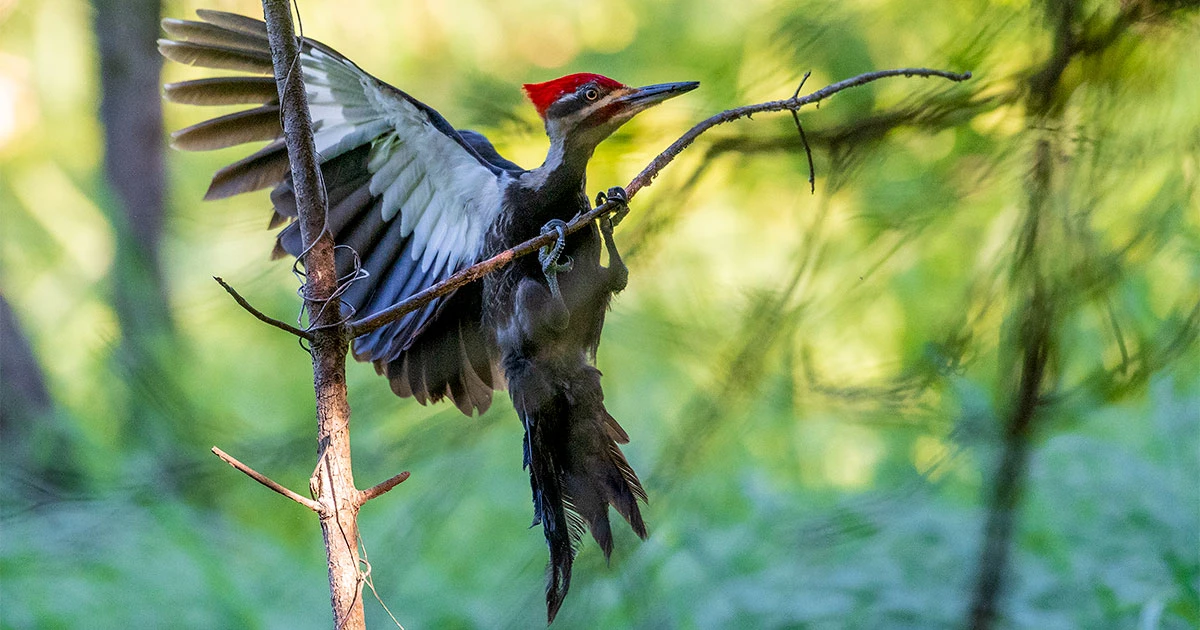
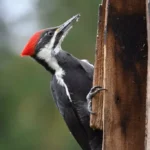
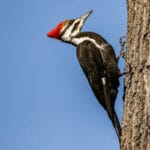
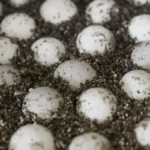
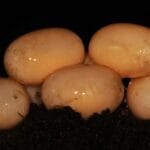











1 thought on “10 Interesting Facts About Woodpeckers”
Comments are closed.